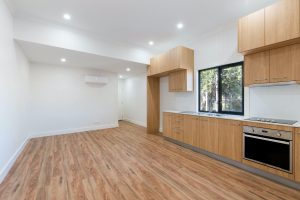 All manner of the economy and industry has changed as a result of the COVID-19 crisis. A January article in Architectural Digest explores how the pandemic inadvertently has prompted an increasing interest in single-family rental investing.
All manner of the economy and industry has changed as a result of the COVID-19 crisis. A January article in Architectural Digest explores how the pandemic inadvertently has prompted an increasing interest in single-family rental investing.
Interest rates in 2020 dropped to record-level lows, and the demand for new homes increased, creating a lack of inventory as well as prices that, for many Americans, are unaffordable. Add to that the newfound desirability of suburban-situated homes, and many homeowning hopefuls have discovered that ownership, for them, is unattainable in today's market.
Investors who can afford to purchase property in this market seem to be banking on the idea that others might be willing to lease rather than borrow for their new abode.
As reporter Tim Nelson puts it in his Digest piece, "A building boom of single-family rental properties has arrived, with investors betting that those who are unable to pay for a suburban mortgage would be willing to settle for a lease."
Citing data from John Burns Real Estate Consulting and the Wall Street Journal, the Digest estimated a total of 16.417 million single-family rental homes across the U.S. In a one-year span ending September 30, 2020, more than 50,000 new rental houses were built—that's a significant increase from a 40-year average of 31,000.
While the pandemic no doubt propelled, the trend of building homes specifically designed as rental properties began during the 2008 housing crisis, Nelson noted.
"Once the large landlords who consolidated their holdings by snatching up foreclosures ran out of distressed assets to acquire, the next logical step was to start building up the housing supply themselves," wrote Nelson. "Add in lender hesitance to finance homeownership for the lower middle class, and you have the recipe for companies like American Homes 4 Rent to add more than 2,500 newly built rental homes to its portfolio in recent times."
Some experts predict that as many as 5% of newly built homes could sell to investors in the coming years.
"It could be that leaving city high-rises behind will become less likely to involve a mortgage," wrote Nelson. "How exactly this might reshuffle the housing market—or what happens if demand cools off—remains to be seen."
The full article is on architecturaldigest.com [1].